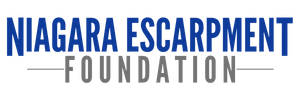Environmental Protection for the Niagara Escarpment Biosphere Reserve through Enhanced Community Engagement
A cornerstone of Ontario’s Greenbelt, the Niagara Escarpment is designated a United Nations Educational Scientific and Cultural Organization (UNESCO) World Biosphere Reserve. In partnership, and with the support of broader Niagara Escarpment Biosphere Reserve (NEBR) participants and stakeholders, the Niagara Escarpment Foundation (NEF) and the Niagara Escarpment Commission (NEC) have initiated a project to encourage and facilitate a more collaborative, community-based governance structure, which includes meaningful engagement with Indigenous Peoples/Communities.
The NEBR project is being generously funded through a grant from The Greenbelt Foundation, with matching funding provided by the NEF, and support for Indigenous engagement from the NEBR. The Greenbelt Foundation invests in projects to strengthen and enhance the Greenbelt to ensure that we can all share its benefits. Ontario’s Greenbelt is over 2 million acres of permanently protected farmland, forests, wetlands and natural areas. In 2005, the Niagara Escarpment and Oak Ridges Moraine were included in the Greenbelt, enhancing the protection of these vital and iconic landscapes.
Ontario’s Greenbelt protects farmland, natural systems and an abundant supply of clean water in the Greater Golden Horseshoe. This region is home to 70% of Ontarians and expected to grow by 3.8 million people and an additional 1.8 million jobs by 2041.
The continued prosperity and livability of the region will be determined to a very significant degree by the success and strength of the Greenbelt and supportive programs.
- Restore and enhance Greenbelt natural and water resource systems.
- Maintain and improve the health of agricultural soils.
- Advance the use of natural solutions and climate resiliency tools such as green infrastructure, carbon sequestration or other activities.
- Minimize fragmentation of the Greenbelt landscape and enhance connectivity with broader regional landscapes.
- Engage the public in enhancing Greenbelt systems and determining how the region will grow.
Currently, the NEBR is coordinated by the NEC, with input and consultation provided from a broad network of interested organizations. The project supports the creation and implementation of a more community-based and participatory governance structure that is envisioned to more readily foster enhanced environmental protection, sustainable development and education on the Niagara Escarpment. It also strives to meet the objective of all UNESCO Biosphere Reserves – to establish shared responsibility at the grassroots level.
The project will retain consultant(s) to build on preliminary work undertaken during 2015-2018 by a NEBR community-based working group. The consultant(s) will undertake a situation analysis of the NEBR, with respectful outreach to Indigenous Peoples/Communities and interviews with community representatives and other partners/stakeholders. The goal is to understand the needs and aspirations of the Biosphere Reserve community as well as their interest and ability to participate in future governance of the NEBR. The consultant(s) will also scan other Biosphere Reserves, with a focus on the 17 others in the Canadian network, to learn established best practices for biosphere reserves.
The consultant(s), working with a steering committee of representatives from across the NEBR (to be established), will recommend both a new NEBR governance structure and an implementation plan. A key component of implementation will be tracking performance of the renewed governance structure via the results of on-the-ground environmental projects and programs.
The expected outcomes include creation of an enhanced NEBR structure in the form of a non-profit/charity with democratic decision-making to: contribute meaningfully to reconciliation with Indigenous Peoples/Communities; enable raising and leveraging of funds for on-the-ground environmental projects that conserve/restore biodiversity, foster sustainable agriculture and resource management, support climate change mitigation and adaptation, and facilitate science and education regarding sustainability, conservation and stewardship.
The needs and interests of local biosphere reserve communities along the Niagara Escarpment, which are geographically and culturally diverse, will be better coordinated and the project will better position the NEBR to achieve its mandate leading to the next UNESCO 10-year periodic review in 2022.
NEXT STEPS
It is recognized that the success of the NEBR cannot be achieved without ongoing support from the Biosphere Reserve community.
Should your organization wish to contribute in-kind or financial support to this initiative, please contact Linda Pim at the Niagara Escarpment Foundation: mailbox@nefoundation.ca or 905 838-0442.
If you wish to participate on a Project Steering Committee, please email nebr@escarpment.org.
